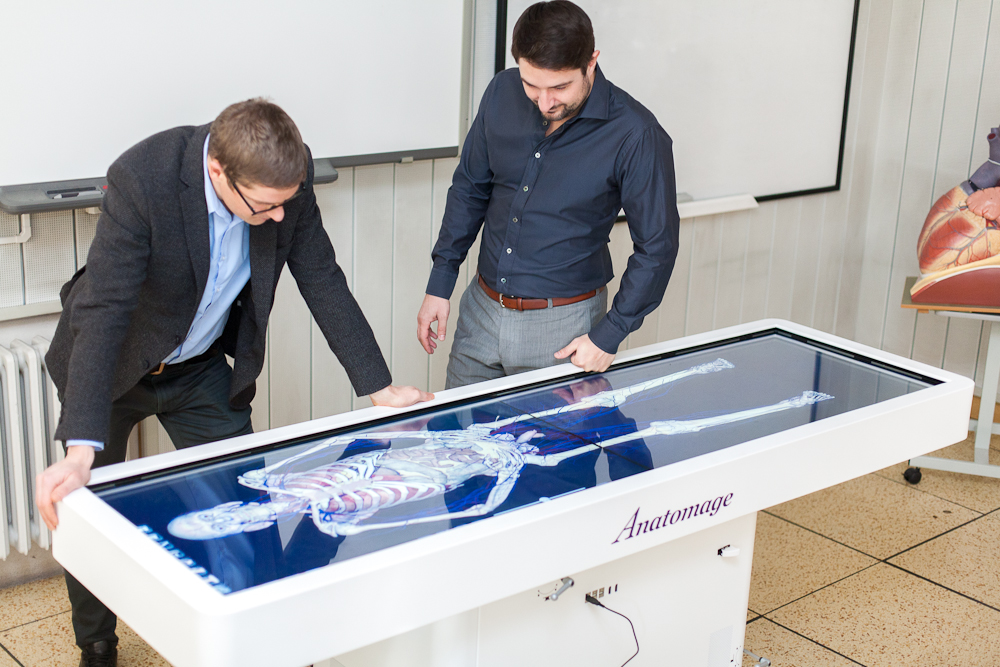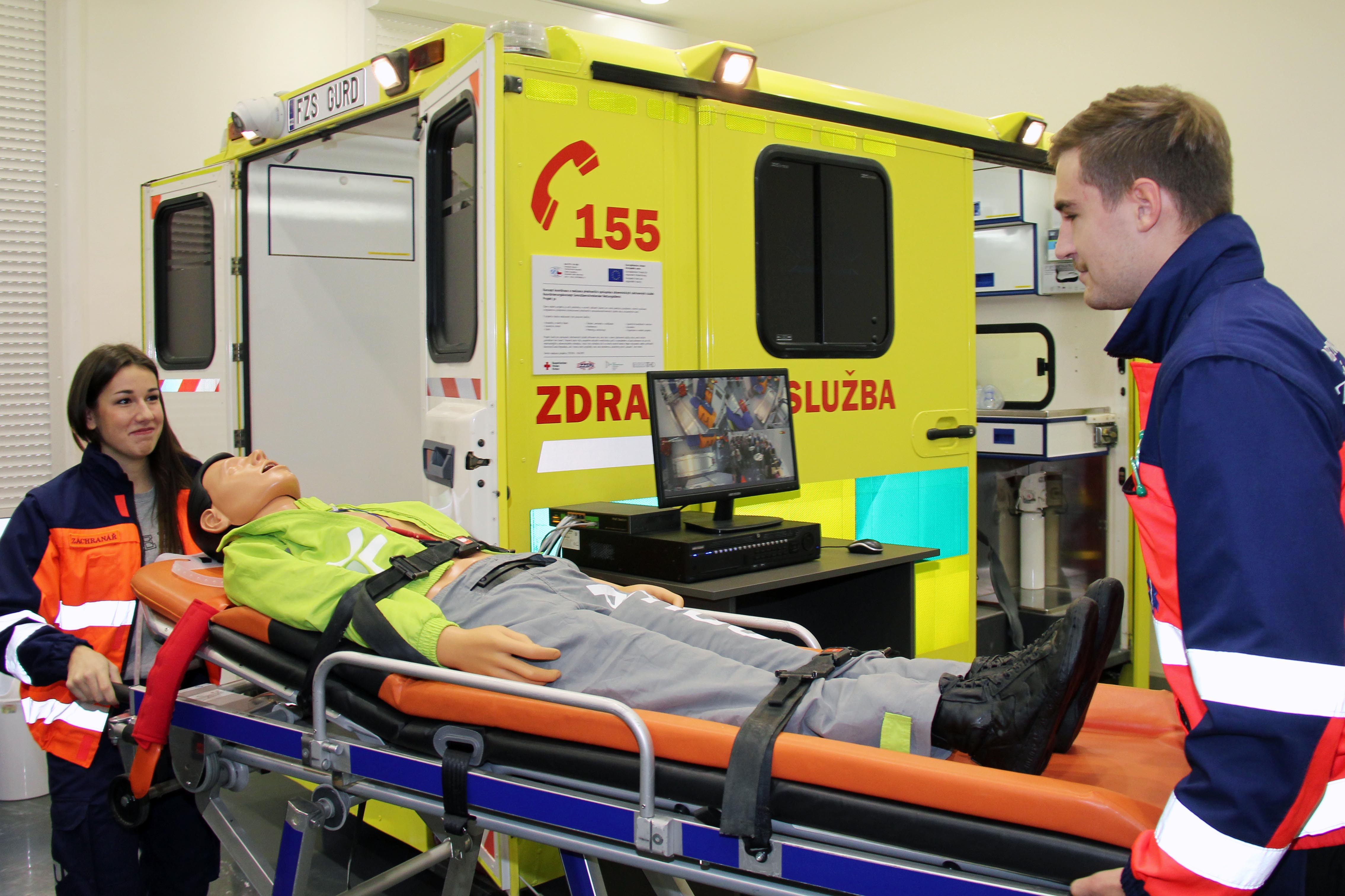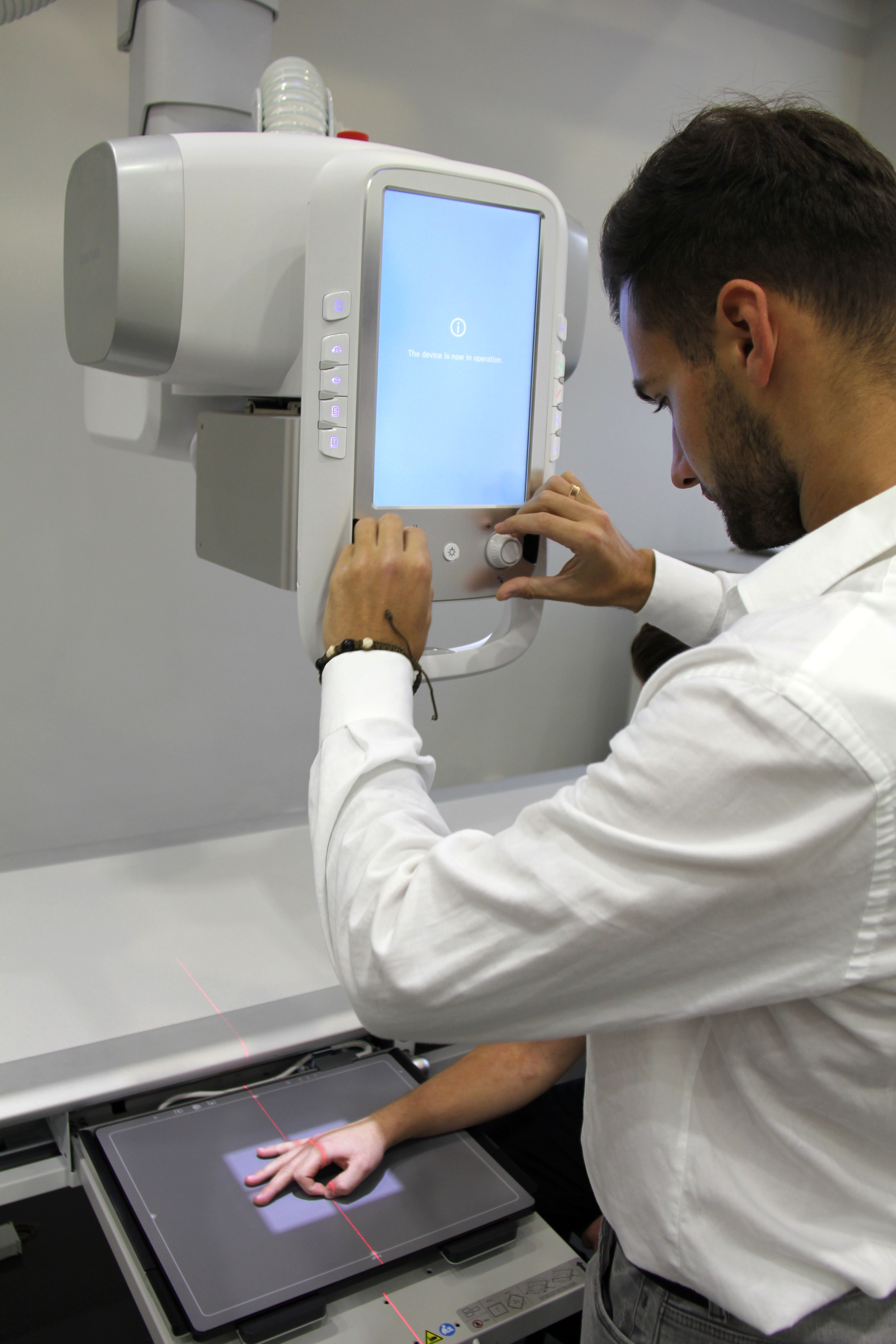Teaching equipment
Teaching at the FZS is continuously modernised and upgraded thanks, among other things, to the use of instruments and technology. In total, there are dozens of devices that students use in all forms of instruction.
Virtual autopsy table
The device can display the detailed overall anatomy of both male and female using multiple life-size individual bodies, ensuring that students become familiar with the anatomical diversity. Both external and internal anatomy are depicted head to toe and contain thousands of named structures. The images are produced by digitally recording the real, chemically unadjusted bodies of deceased donors. The colour and shape of the bodies are preserved to accurately represent the true anatomy. The virtual body can be cut layer by layer. When these layers become transparent, the surrounding anatomy is revealed. Students can clearly visualize circulatory, neural, muscle and bone structures. In addition, the flow of blood in any artery or vein in the body can be animated live. The table is equipped with a unique interactive tool for virtual dissection, complete with thousands of notes. On the touch screen, users can rotate structures, make multiple slices, cancel slices immediately, and create notes. They can explore the body by selecting different structures or searching for structures from a list by name. The craniotomy tool allows the user to perform an autopsy on the skull and examine the brain tissues. Users can use in-depth insight into the body's main structures, such as the heart, lungs, abdomen and pelvis or spine, which can be difficult to see throughout the dead body. Table features allow users to switch systems to track certain anatomical structures. Structures can be rotated or zoomed.

Ambulance simulator
Ambulance simulator - this is a completely unique, completely innovative device for teaching, fully equipped modern ambulance service ambulance. This device is equipped with all instruments, technology and furniture, including a stretcher with a very realistic, highly sophisticated model of the patient. The simulator include fully functioning resuscitation devices, ECGs, oxymeters, dispensers, defibrillation trainers, etc. Nor do they include equipment with the necessary medical supplies used to treat the patient. The entire simulator is equipped with a camera system that allows the activities of students in the car to be captured and projected through a large-scale projection so that both teachers and students can follow the course of the rehearsed intervention.
The ambulance simulator allows to familiarize with the premises, work on aids and practice model situations. The ambulance includes a patient area which contains the necessary equipment to provide pre-hospital emergency care. Portable instrumentation is an important component. Cameras inside the ambulance allow for the monitoring of the live coverage of the care provided inside the car, but also the analysis of the model situations from the recording. The ambulance equipment also includes selected medicines for the treatment of life-threatening conditions and pain.
Ambulances and their equipment are used by outbound groups to provide life-saving emergency care and to quickly transport a patient to a medical facility.

Skiagraf
In addition to the ambulance, the simulation centre also houses a skiagraf simulator, a device for displaying both hard and soft human tissues. It is a fully functional direct digitisation skiagraph apparatus with an X-ray on an overhead hinge, which includes a floating desk, a vertigraph (i.e. a standing stand), a 35 x 43 cm detector and a workstation with a computer and monitor. Skiagraf is designed especially for students of the Radiological Assistant program who can safely develop practical skills to perform projection techniques in patient investigation. The skiagraf simulator is a very unique tool and, in terms of quality, it is equal to the equipment used under real hospital conditions. This (like the ambulance simulator) makes an important contribution to improving the quality of teaching by students in the Faculty of Health Care Studies.

In Body
With this device, students can measure total body composition (total water, intracellular water, extra-cellular water, proteins, minerals, fat mass, weight). Obesity-BMI analysis may be performed, percentage fat analysis of muscle fat (weight, skeletal muscle mass, fat mass), segmental analysis of muscle (left hand, right hand, torso, left foot, right foot) and segmental analysis of fat. Among the activities requested are fitness assessments weight control (recommended weight, fat control, muscle control). Parameters studied include (basal metabolism, basal metabolic age, WHR index, visceral fat vcm2 (VFA), ABSI index. Based on the results of the measurements, the students establish a procedure by which, using nutritional and exercise advice, the patient reaches the desired target weight.
You can watch the details of the device on a Youtube video that was filmed at our faculty.
Other highly modern aids used for educational innovation include a diagnostic ultrasound simulator, a force platform to teach physiotherapy, a diagnostic ultrasound, a bioelectric impedance body composition analysis machine, an ECG and EMG machine, an ECG simulator, patient models complete or torsos, rescue packs and a host of others.